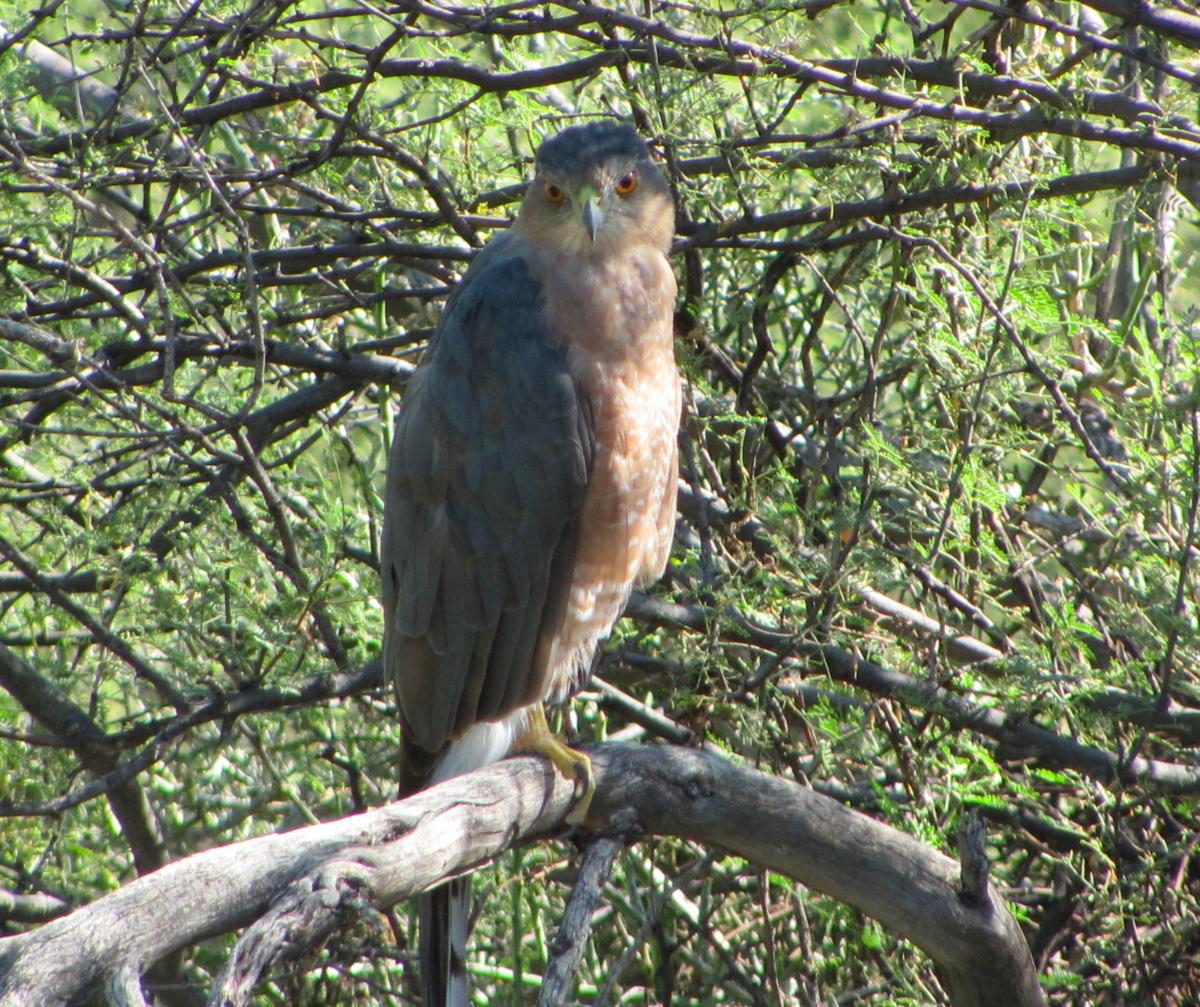Arizona Game and Fish Department received around a dozen calls in the last 10 days about Tucsonans being “attacked” by Cooper’s hawks, but the department describes the encounters a little differently.
Mark Hart, a department spokesman, said it’s not really an attack, it’s “a deterrent to discourage people from getting closer” to nearby nests.
Southern Arizona residents have reported the hawks swooping down and striking them in residential areas from North Oracle Road to Sonoita.
But there really isn’t anything the department or citizens can do — the Cooper’s hawks are protected by law. If you kill one you could face a $750 fine and six months in jail under state law.
You can take a few steps to protect yourself if you know the hawks are in your area. They are usually active until the monsoon rains arrive later this month.
The department suggests people alter their routes away from nearby nests and use an open umbrella to protect the upper body. It is also suggested, if you can, to post signs or caution tape near the nested birds to remind others to be aware.
Hart said that as the young hawks grow, Tucsonans may see one on the ground. “Rather than picking it up, leave it where it is,” he said.
The parents continue to feed the fledglings until they learn to fly.
A young hawk that has fallen from or has been blown out of its nest prematurely can be placed in a makeshift one.
Build it by securely attaching a milk crate or laundry basket to the tree where the nest is located or to a shaded tree nearby.
Next, place an old soft towel in the bottom of the container, attaching it to the tree at about shoulder height.
The parents will make sure to stop by and feed it.





